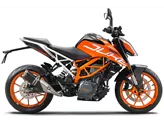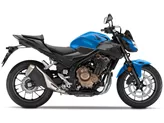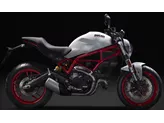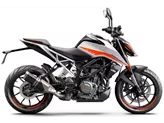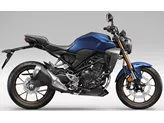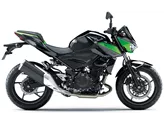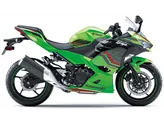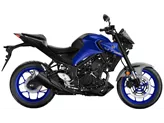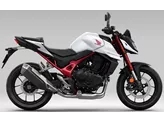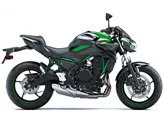Kawasaki Z 400 2023 vs. Kawasaki Z650 2023
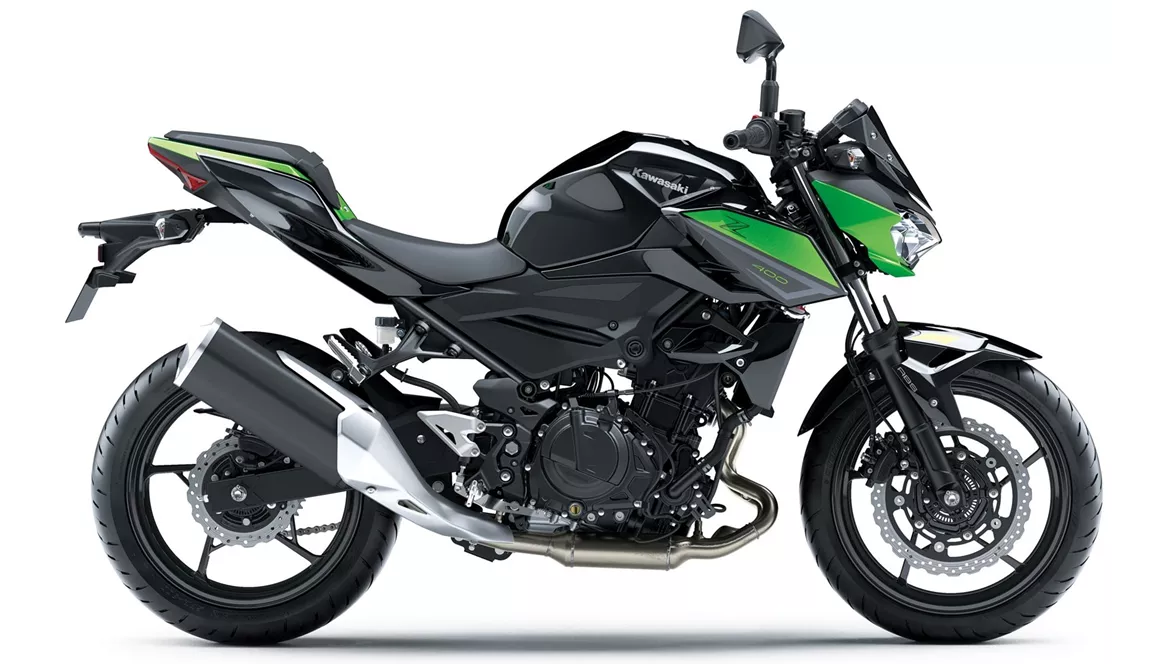
Kawasaki Z 400 2023
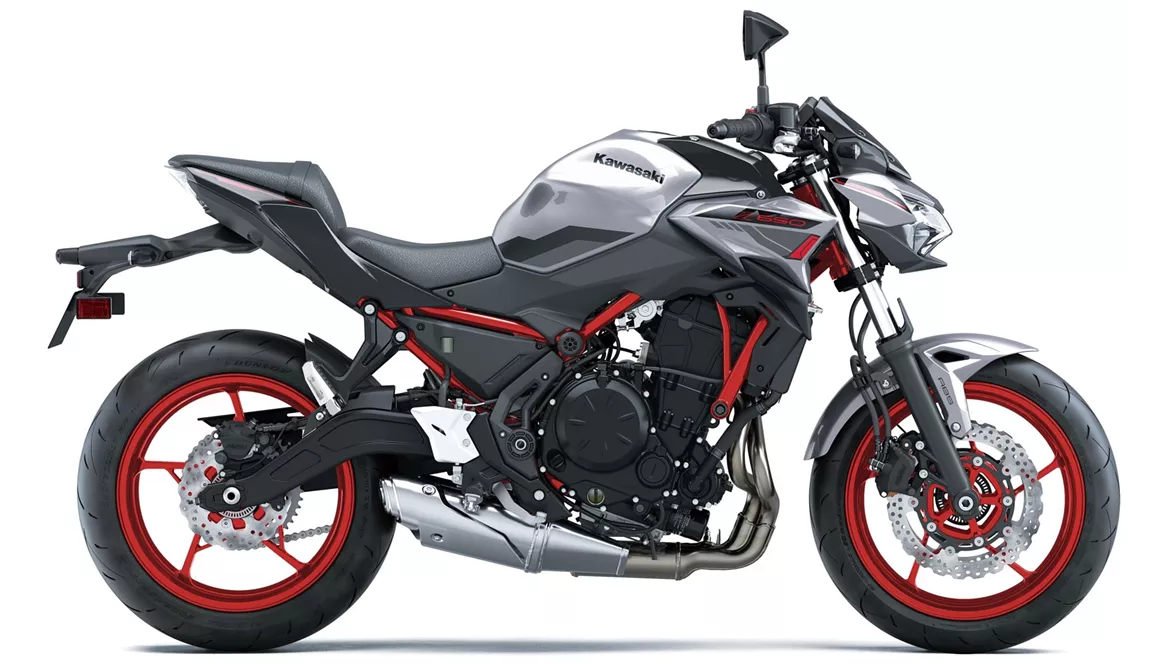
Kawasaki Z650 2023
Overview - Kawasaki Z 400 2023 vs Kawasaki Z650 2023
The Kawasaki Z 400 model year 2023 is a naked bike with a 399cc in-line engine that produces 45 horsepower and 37 Nm of torque. It features a fuel injection system and has a liquid-cooled engine. The bike has a 2-cylinder configuration and a steel tubular frame. The front suspension consists of a telescopic fork, while the rear suspension is a swing arm with a monoshock and preload adjustment. The front brakes are single disk with a diameter of 310 mm and double piston technology. The bike is equipped with ABS as an advanced rider assistance system. The front tire has a width of 110 mm and a diameter of 17 inches, while the rear tire has a width of 150 mm and a diameter of 17 inches. The wheelbase is 1370 mm and the seat height is 785 mm. The bike has a kerb weight of 167 kg with ABS and a fuel tank capacity of 14 liters.
On the other hand, the Kawasaki Z650 model year 2023 is also a naked bike but with a more powerful 649cc in-line engine that produces 68 horsepower and 65.7 Nm of torque. It has similar technical specifications to the Z 400, including a fuel injection system, liquid-cooled engine, 2-cylinder configuration, and steel tubular frame. The front suspension is a telescopic fork, while the rear suspension is a swing arm with a monoshock and preload adjustment. However, the Z650 has double disk front brakes with a diameter of 300 mm and double piston technology. In addition to ABS, it also has traction control as an advanced rider assistance system. The front tire has a width of 120 mm and a diameter of 17 inches, while the rear tire has a width of 160 mm and a diameter of 17 inches. The wheelbase is slightly longer at 1410 mm and the seat height is 790 mm. The bike has a kerb weight of 187.1 kg with ABS and a fuel tank capacity of 15 liters.
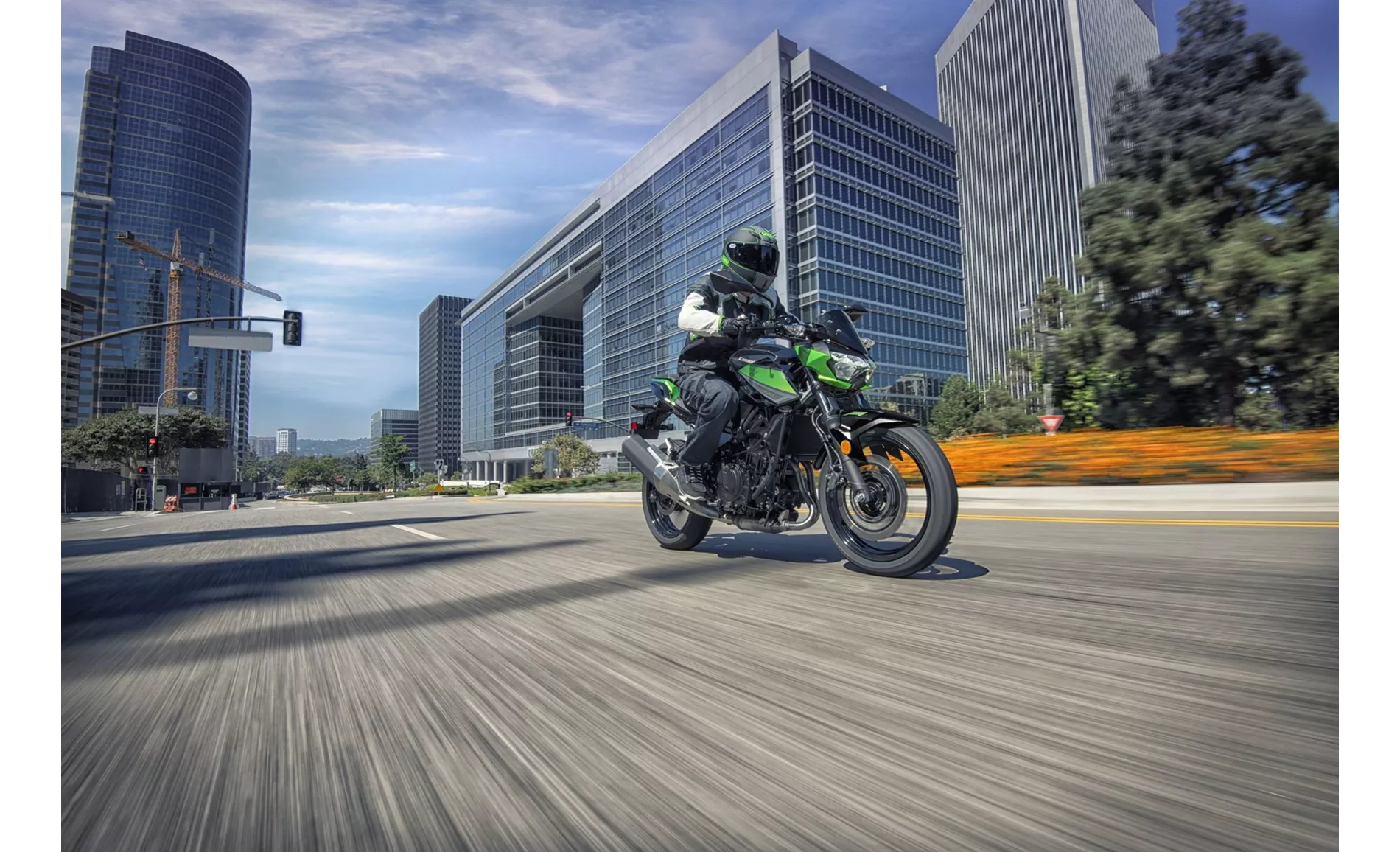
Kawasaki Z 400 2023
In terms of strengths, the Kawasaki Z 400 2023 has a lively engine, good chassis and brakes, easy handling, a grown-up look, and high-quality workmanship. On the other hand, the Kawasaki Z650 2023 is praised for its very accessible handling, compact and easy-to-maneuver nature, and the confidence it gives to small riders. It also has adjustable levers, which can be beneficial for customization.
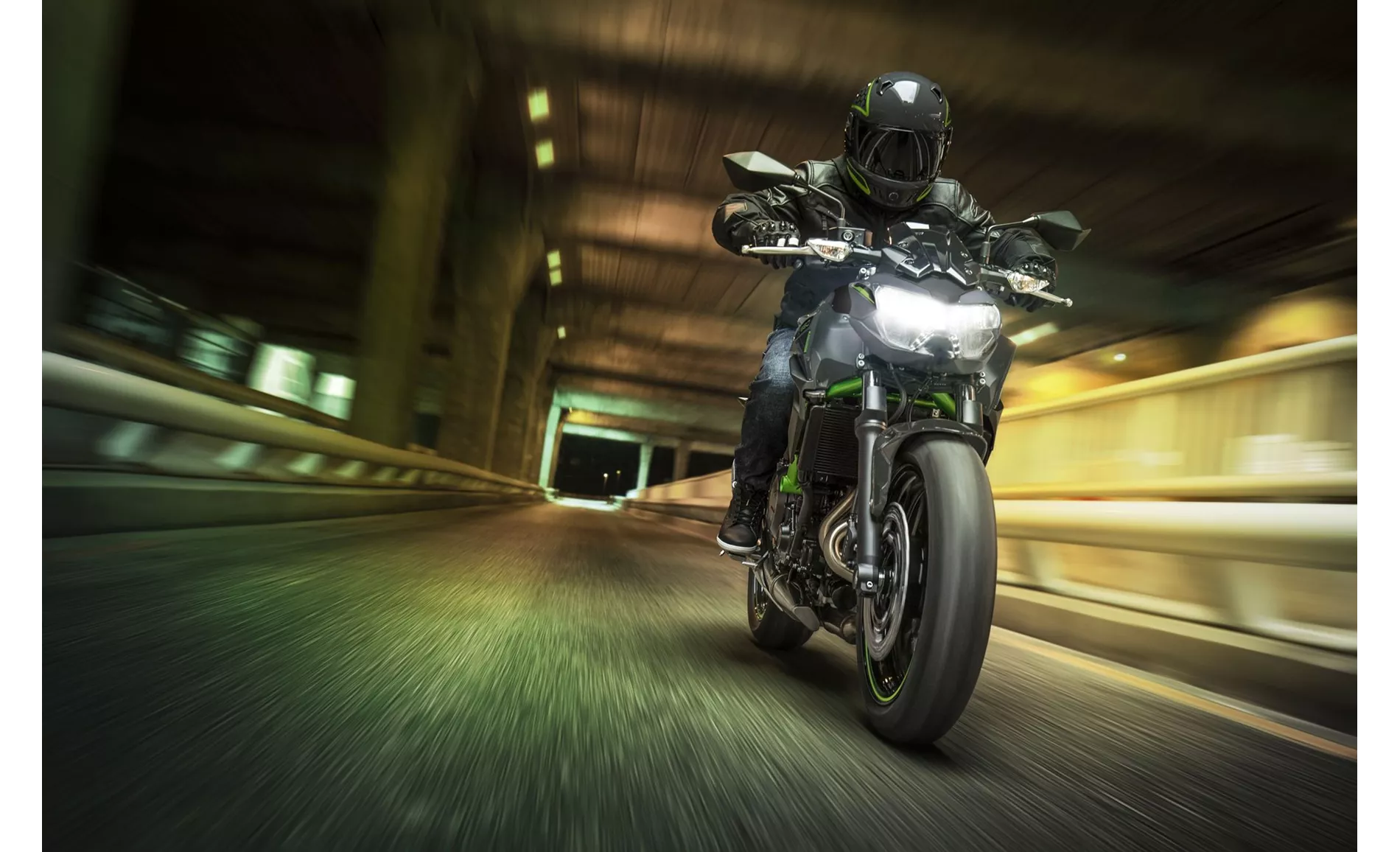
Kawasaki Z650 2023
However, the Kawasaki Z 400 2023 has a weakness in the form of non-adjustable levers, which may limit the comfort and customization options for some riders. On the other hand, the Kawasaki Z650 2023 has a few weaknesses, including not enough space on the bike for tall riders, a bike that looks a class smaller than its 650cc engine would suggest, an engine that may appear tame, a very defensive seating position, and handlebars that are too narrow and cranked too much for a naked bike.
Overall, both bikes have their strengths and weaknesses, and the choice between them would depend on the rider's preferences and priorities. The Z 400 may be more suitable for riders who prioritize a lively engine and high-quality workmanship, while the Z650 may be a better choice for those who value accessible handling and confidence-inspiring features.
Technical Specifications Kawasaki Z 400 2023 compared to Kawasaki Z650 2023
Pros and Cons in comparison
Pros and Cons in comparison
Kawasaki Z 400 2023
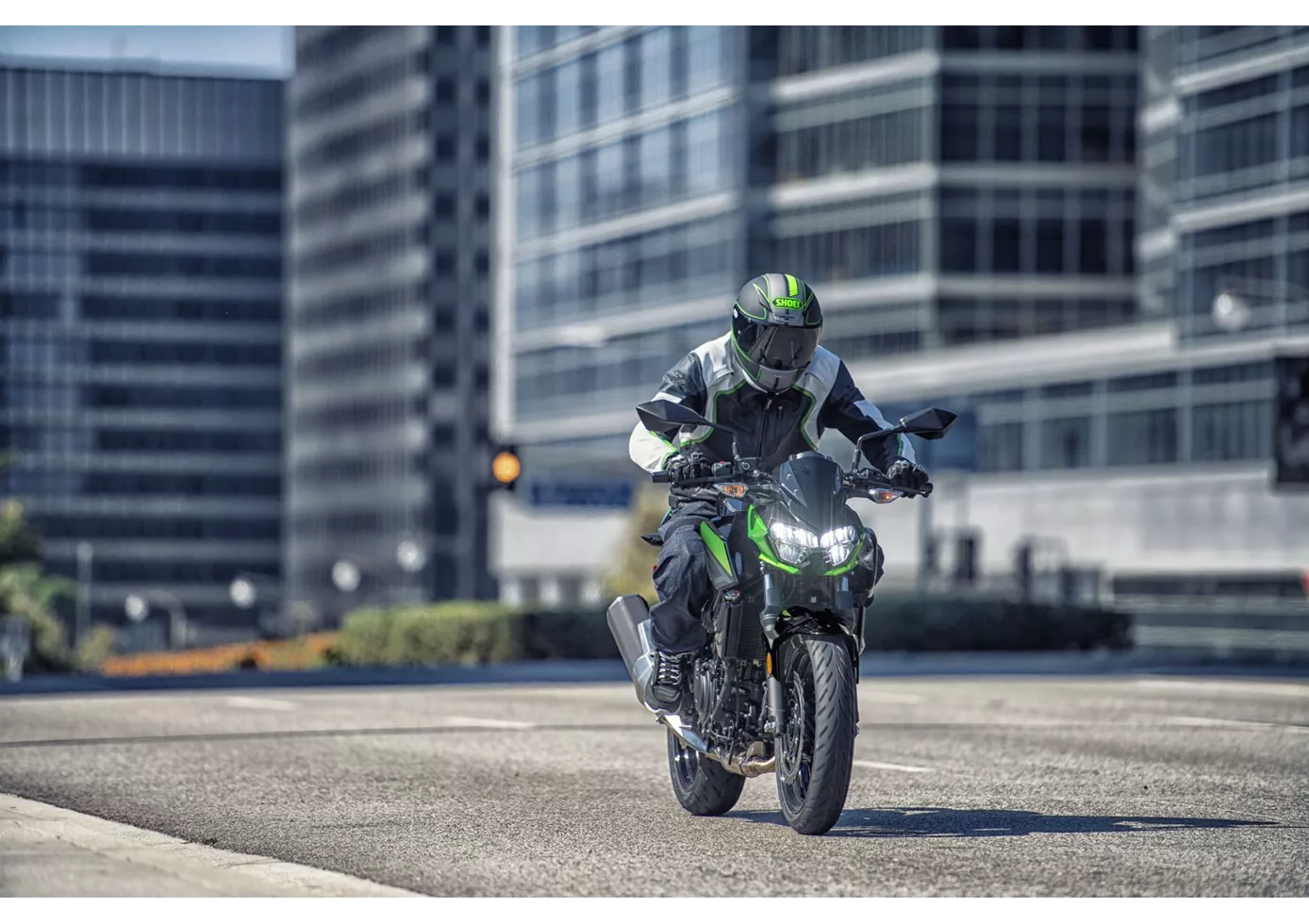
A cool and sensible entry into the A2 class. The Kawasaki Z400 scores points all along the line with its instinctive handling and the in-line two-cylinder, which convinces with good response and sufficient power. You can't go wrong with this naked bike and you can overlook the fact that the levers are not adjustable - after all, costs have to be saved somewhere.
Kawasaki Z650 2023
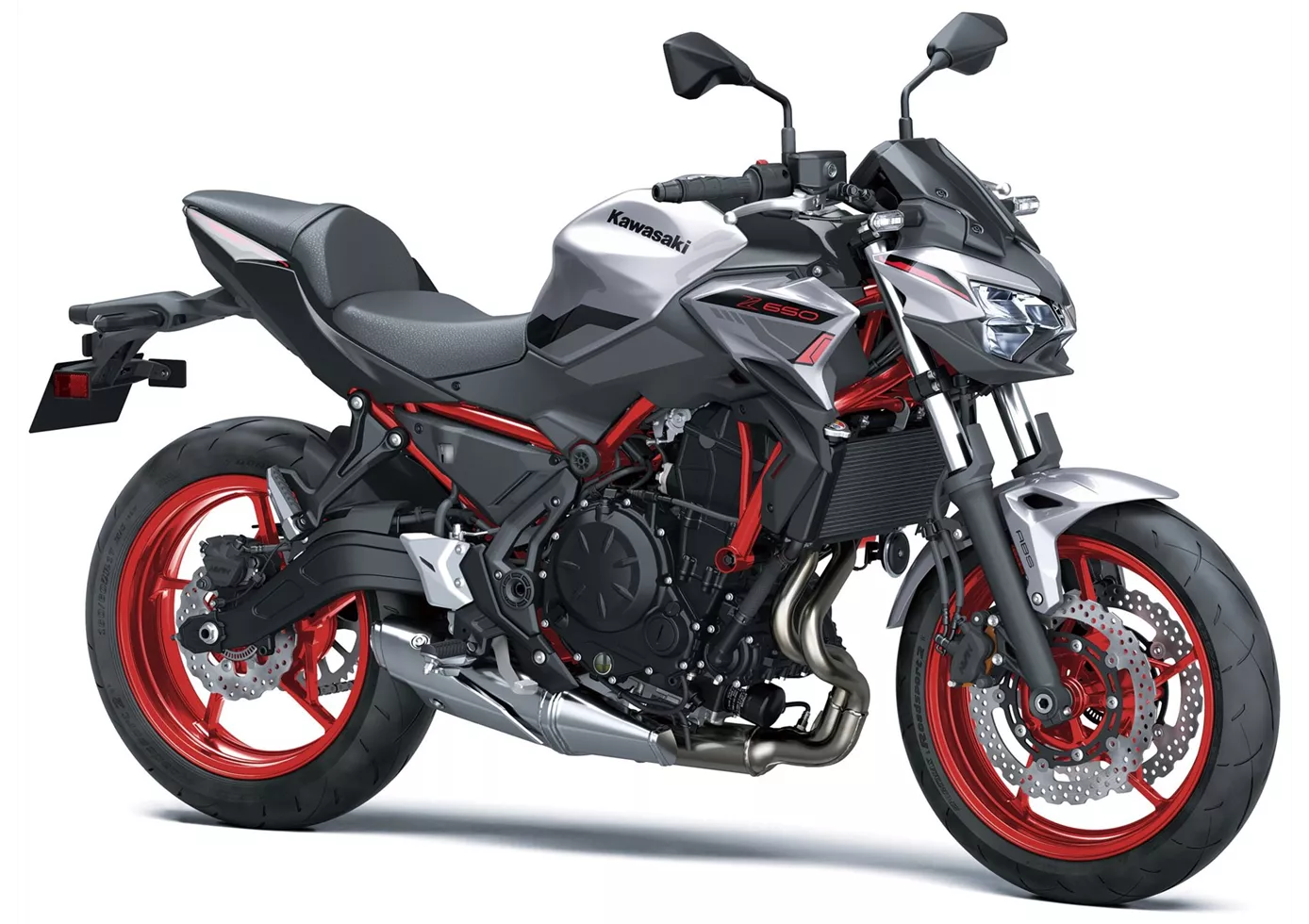
The Kawasaki Z 650 is probably the most docile motorbike in the naked bike segment. And that is to be understood in an absolutely positive way - as long as you are not particularly tall and heavy. It is slim, light, agile and accessible. All the controls, but also the engine, do not overwhelm. If you are looking for spectacular performance, you should go for the Z 900, but if you are looking for a nimble and easy-to-ride motorbike, you will be satisfied.
Price Comparison Avarage Market Price Kawasaki Z 400 vs Kawasaki Z650
There are a few key differences between a Kawasaki Z 400 2023 and a Kawasaki Z650 2023. In terms of price, the actual average price of a Kawasaki Z650 2023 is about 20% higher. Compared to Kawasaki Z650 2023 there are less Kawasaki Z 400 2023 bikes available on the 1000PS.de Marketplace, specifically 89 compared to 243. It takes less time to sell a Kawasaki Z 400 with 123 days compared to 146 days for a Kawasaki Z650. Since model year 2019 1000PS.de editors have written 8 reviews for the Kawasaki Z 400 and 31 reviews for the Kawasaki Z650 since model year 2017. The first review for the Kawasaki Z 400 was published on 02/10/2018 and now has more than 23,200 views. This compares to more than 25,000 views for the first review on Kawasaki Z650 published on 08/11/2016.





